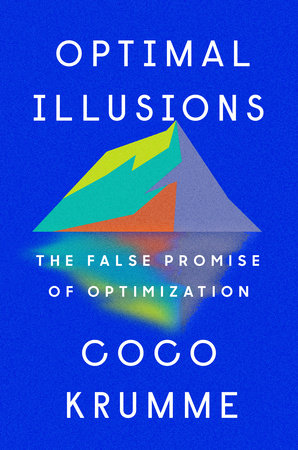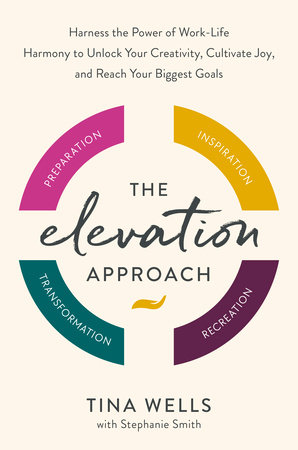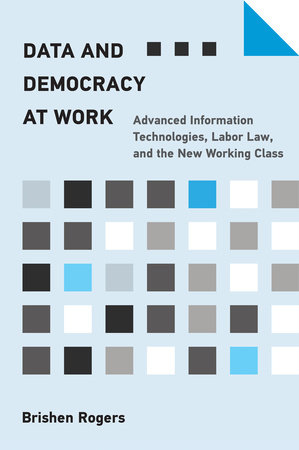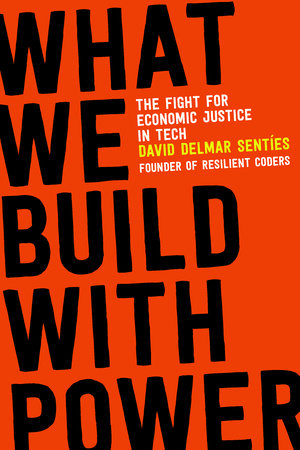Quick Summary
One Sentence Summary
“Stress Test: Reflections on Financial Crises” offers an insightful and candid inside look into the U.S. financial crisis of 2007-2009, through the lens of Timothy F. Geithner, former U.S. Secretary of the Treasury.
Big Idea
The big idea of “Stress Test” is to provide a detailed and personal account of the strategies, challenges, and decisions made during the financial crisis, offering a unique perspective on economic policy-making and crisis management.
Five Key Ideas
- Crisis Origins: Geithner discusses the roots and factors contributing to the financial crisis, highlighting systemic risks and regulatory weaknesses.
- Emergency Response: He details the emergency measures taken to stabilize the economy, including controversial bailouts and stress tests for banks.
- Leadership Challenges: The book delves into the complexities of leading in a crisis, dealing with political pressures, and making tough decisions.
- Economic Principles: It offers insights into key economic principles and policies that guided the response to the crisis.
- Personal Reflections: Geithner provides personal reflections on his role, mistakes, successes, and the emotional toll of managing a crisis of such magnitude.
Actionable Advice
- Understanding Complexity: Embrace the complexity of economic systems and the importance of being prepared for unexpected crises.
- Crisis Management: Learn from the strategies used during the financial crisis for effective crisis management and decision-making under pressure.
- Regulatory Insight: Gain insights into financial regulations and the importance of systemic risk management.
About the Author
Timothy F. Geithner served as the 75th U.S. Secretary of the Treasury and was a key figure in President Obama’s economic team. He previously served as president of the Federal Reserve Bank of New York.
Read Next
- “The Big Short” by Michael Lewis – for a different perspective on the financial crisis.
- “Too Big to Fail” by Andrew Ross Sorkin – for an in-depth look at the collapse of major financial institutions.
- “On the Brink” by Henry M. Paulson Jr. – for insights from another key figure in the crisis response.
In Depth
Crisis Origins
The financial crisis of 2007-2009 didn’t emerge out of nowhere. In “Stress Test,” Geithner paints a vivid picture of the complex factors that set the stage for this economic catastrophe. He emphasizes the role of systemic risks and regulatory weaknesses, which he believed were significantly underestimated.
One of the critical factors was the housing bubble. Prices soared, driven by easy credit and speculative investments. Geithner points out how this created an unsustainable situation. When the bubble burst, it wasn’t just homeowners who suffered; the impact rippled through financial institutions that had heavily invested in mortgage-backed securities.
A detailed example from the book involves the fall of Lehman Brothers. Geithner describes the bank’s collapse as a turning point in the crisis. Lehman had been heavily invested in real estate and was severely affected when the housing market crashed. The government’s decision not to bail out Lehman Brothers sent shockwaves through the financial world, amplifying the crisis. Geithner notes:
“The failure of Lehman Brothers caused a run on the world’s most powerful banks and corporations, dramatically intensifying the crisis.”
The interconnectedness of financial institutions played a significant role. Banks and investment firms were tied together through complex financial instruments. When one faltered, others felt the tremors. Geithner emphasizes how this interconnectedness turned individual failures into a systemic crisis.
Another factor was the role of credit rating agencies. These agencies often gave high ratings to risky financial products, leading investors to underestimate the risks involved. When these products started to fail, it caught many by surprise and contributed to the crisis’s severity.
Geithner criticizes the existing regulatory framework, which he found inadequate to address the complexities of modern financial markets. He argues that regulators were not equipped to understand or manage the risks that were building. This lack of oversight allowed dangerous practices to proliferate, ultimately contributing to the crisis.
In “Stress Test,” Geithner doesn’t just offer a critique; he shares his personal reflections on the crisis origins, including the pressures and uncertainties he faced. His account provides valuable insights into the challenges of recognizing and addressing systemic risks in a complex economic environment.
Emergency Response
During the heat of the financial crisis, rapid and decisive actions were crucial. Geithner explains the emergency measures taken to stabilize the economy, which included controversial bailouts and the implementation of stress tests for banks.
One of the most critical steps was the Troubled Asset Relief Program (TARP). This program aimed to purchase toxic assets from financial institutions to prevent their collapse. Geithner acknowledges the public’s resentment towards using taxpayer money for bailouts. However, he argues that these were necessary evils to prevent a total economic meltdown. He states:
“The choice we faced was between saving the system and letting it burn. And letting it burn was not an option.”
A detailed example of this approach was the bailout of AIG, an insurance giant on the brink of failure due to its exposure to risky financial derivatives. The collapse of AIG would have had catastrophic consequences for the global financial system. Geithner describes the tense negotiations and the ultimate decision to extend an $85 billion lifeline to AIG. This decision was met with public outcry but, as Geithner points out, it was a critical move to prevent further chaos.
Another significant step was the implementation of stress tests for the largest banks. These tests were designed to assess the banks’ ability to withstand further economic shocks. The idea was to restore confidence in the financial system by proving that banks were stable or, if not, by forcing them to raise more capital. Geithner recalls the skepticism around this approach but insists that the transparency and rigor of the stress tests played a vital role in stabilizing the financial sector.
Geithner also touches on the challenges of coordinating responses across different government agencies and dealing with international implications. The crisis wasn’t confined to the United States; it had global repercussions. Therefore, part of the emergency response involved working with other countries to manage the crisis on an international scale.
Throughout this section, Geithner is candid about the difficulties and uncertainties involved in managing the crisis. The emergency response was a mix of calculated risks and tough decisions, often made under intense pressure and scrutiny. It’s a testament to the complexities of economic policymaking during times of crisis and the importance of decisive leadership.
Leadership Challenges
Navigating a global financial crisis is a test of leadership, and Geithner’s account in “Stress Test” is a testament to that. He delves into the complexities of leading during a crisis, dealing with political pressures, and making tough, often unpopular decisions.
Geithner faced immense scrutiny from the public, the media, and politicians. Every move was under the microscope, with criticism coming from all directions. He admits:
“It was like choosing between amputating a limb and fighting a cancer that might kill the patient. Neither choice was appealing.”
A detailed example of these leadership challenges is the decision to let Lehman Brothers fail. This decision was one of the most controversial of the crisis. Geithner reflects on the intense deliberations that led to it. The fear was that bailing out Lehman would set a dangerous precedent, encouraging reckless behavior by other financial institutions. However, the fallout from Lehman’s collapse was more severe than anticipated, leading to intensified criticism of the decision.
In navigating these challenges, Geithner emphasizes the importance of clear communication. He admits that, at times, his team struggled to effectively communicate the rationale behind their decisions to the public and Congress. The complexity of the financial system made it difficult for the average person to understand the actions taken, leading to mistrust and skepticism.
Geithner also faced internal challenges, coordinating efforts among various government agencies and ensuring a unified response. He highlights the difficulties in aligning the priorities and actions of the Treasury, the Federal Reserve, and other regulatory bodies. This required not only strategic thinking but also diplomatic skills to manage different viewpoints and agendas.
Amid these challenges, Geithner remained focused on the goal: stabilizing the financial system and preventing a complete economic collapse. He underscores the emotional toll of the crisis, not just on himself but also on his team. The weight of the decisions, the relentless pace, and the public scrutiny were constant pressures.
Through his narrative, Geithner sheds light on the human side of economic policymaking. He shows that behind every decision, there were individuals grappling with uncertainty, responsibility, and the potential consequences of their actions. His reflections offer valuable insights into the personal and professional challenges of leading through a crisis.
Economic Principles
Throughout “Stress Test,” Timothy Geithner emphasizes the economic principles and policies that guided the response to the financial crisis. He illustrates how understanding these principles was crucial for making informed decisions during uncertain times.
One of the central principles was the need for aggressive government intervention during systemic crises. Geithner argues that when financial systems are on the brink, the cost of inaction far outweighs the risks of intervention. He notes:
“In a financial panic, the most important thing is to make sure the fire is out, not to obsess over the moral hazard of using taxpayer-funded water.”
A detailed example highlighting this principle was the bailout of the auto industry. The decision to extend financial assistance to struggling automakers like General Motors and Chrysler was contentious. Critics argued it would encourage reckless corporate behavior. However, Geithner and his team believed that the potential collapse of these companies posed a greater risk to the economy. The bailout was not just about saving companies; it was about preventing further job losses and economic deterioration.
Another key principle was the importance of liquidity in crisis management. Geithner frequently discusses how providing liquidity to banks and financial institutions was vital to prevent a total freeze of the financial system. This involved unconventional measures, such as the Federal Reserve’s decision to cut interest rates to near zero and engage in quantitative easing.
Geithner also talks about the principle of balancing short-term crisis response with long-term economic health. This involved tough choices, such as implementing regulatory reforms to prevent future crises while not stifling economic recovery. He reflects on the challenges of finding this balance, especially under intense political and public scrutiny.
Furthermore, Geithner touches on the global nature of the financial system. He highlights the need for international cooperation in managing economic crises. The 2007-2009 crisis was not confined to the United States; its effects were felt worldwide. Coordinating with other nations and international bodies was essential to ensure a comprehensive response.
Through these economic principles, Geithner provides insights into the complexity of economic policymaking. His narrative underscores the importance of understanding economic dynamics, especially during times of crisis. These principles not only guided the immediate response to the crisis but also shaped the long-term recovery and reform efforts.
Personal Reflections
In “Stress Test,” Timothy Geithner doesn’t shy away from sharing his personal reflections on his role, mistakes, successes, and the emotional toll of managing a crisis of such magnitude. These reflections provide a human dimension to the story of the financial crisis, offering a candid look at the person behind the policymaker.
One of the most poignant aspects Geithner discusses is the weight of responsibility he felt. He was acutely aware that his decisions affected millions of lives. Reflecting on this, he writes:
“The hardest decisions in a crisis are not what you should do, but what you can do, and how to live with what you can’t do.”
A detailed example of this comes from the bailout decisions. Geithner faced intense criticism for bailing out big financial institutions while millions of Americans struggled. He acknowledges the moral complexity of these decisions but stands by them as necessary for the greater good. He reflects on the dilemma of having to save the very institutions that helped cause the crisis to prevent an even worse economic disaster.
Geithner also discusses his mistakes. He admits that he underestimated the severity of the housing bubble and the risks it posed. He acknowledges communication missteps, particularly in explaining the crisis response to the public and Congress. He reflects on how these communication challenges sometimes undermined public trust and support for their actions.
Successes are part of his reflections too. Geithner considers the prevention of a complete financial meltdown and the subsequent recovery of the economy as significant achievements. Despite the controversies and challenges, he believes that the actions taken during his tenure helped avert a worse economic catastrophe.
The emotional toll of managing the crisis is a recurring theme in Geithner’s reflections. He talks about the relentless pace, the stress, and the pressure from all sides. He shares personal moments, such as times when the burden seemed overwhelming, offering a glimpse into the personal struggles that came with the job.
Through his personal reflections, Geithner provides a unique perspective on the crisis. He doesn’t just recount events; he shares his thoughts, feelings, and doubts. These reflections add depth to the narrative, making it not just a story about an economic crisis, but also about leadership, responsibility, and resilience in the face of extraordinary challenges.
Actionable Advice
- Understand Systemic Risks: Recognize how interconnected financial systems can amplify risks. Stay informed about economic indicators and market trends.
- Prepare for Crises: Develop contingency plans for financial emergencies. Personal or organizational, having a strategy is crucial.
- Value Transparency: In business or personal finance, clear communication about risks and strategies builds trust.
- Embrace Tough Decisions: Understand that sometimes there are no easy choices, especially in crisis management.
- Learn from Mistakes: Reflect on past decisions, both good and bad. Use these reflections for better future decisions.
- Prioritize Long-term Stability: In finance, opt for sustainable growth over short-term gains.
- Foster Cooperation: Collaborate with others, understanding that economic issues often require collective efforts.
- Stay Informed: Keep up with economic policies and reforms. Knowledge is power in navigating financial landscapes.
- Balance Risks and Rewards: In investments or business decisions, weigh potential benefits against possible consequences.
- Take Care of Mental Health: High-stress situations take a toll. Prioritize well-being to maintain clear decision-making.
About the Author
Timothy F. Geithner is an American economist, born on August 18, 1961, in Brooklyn, New York. He served as the 75th Secretary of the Treasury under President Barack Obama from 2009 to 2013. Before that, Geithner was the president of the Federal Reserve Bank of New York from 2003 to 2009, playing a key role during the financial crisis. Educated at Dartmouth College and Johns Hopkins University, he holds a master’s degree in International Economics and East Asian Studies. Geithner’s career has been predominantly in economic policy and governance, with roles at the U.S. Department of the Treasury, the International Monetary Fund, and the Council on Foreign Relations. He is known for his crisis management skills and his belief in aggressive government intervention to stabilize financial systems during economic downturns. Geithner advocates for transparency in financial practices and policies, emphasizing the importance of understanding systemic risks and preparing for economic emergencies. Post his tenure as Secretary of the Treasury, he authored “Stress Test: Reflections on Financial Crises,” providing an insider’s perspective on the 2008 financial crisis. Geithner currently serves as the president of Warburg Pincus, a private equity firm.
Read These Next
You might like these similar books
- “Too Big to Fail” by Andrew Ross Sorkin
- “The Big Short: Inside the Doomsday Machine” by Michael Lewis
- “On the Brink: Inside the Race to Stop the Collapse of the Global Financial System” by Henry M. Paulson Jr.
- “The Courage to Act: A Memoir of a Crisis and Its Aftermath” by Ben S. Bernanke
- “Firefighting: The Financial Crisis and Its Lessons” by Ben S. Bernanke, Timothy F. Geithner, and Henry M. Paulson Jr.
FAQ
Q: What is “Stress Test” about?
A: “Stress Test” is Timothy F. Geithner’s account of the 2008 financial crisis, detailing his experiences and decisions as the U.S. Treasury Secretary.
Q: Who should read “Stress Test”?
A: It’s ideal for anyone interested in economics, finance, history, or leadership during crises.
Q: Is “Stress Test” a difficult read?
A: It’s detailed but written in simple language, making it accessible to a broad audience.
Q: Does the book provide insights into economic policy?
A: Yes, it offers in-depth views on economic policymaking and crisis management.
Q: Is “Stress Test” biased?
A: It’s a personal account, so it reflects Geithner’s perspectives and decisions.
Q: Are there lessons for non-economists in the book?
A: Yes, it offers universal lessons in leadership, decision-making, and crisis management.
Q: Does the book discuss global economic impacts?
A: It touches on the global implications of the financial crisis.
Q: How long is “Stress Test”?
A: The book is moderately lengthy, offering a comprehensive view of the crisis.







